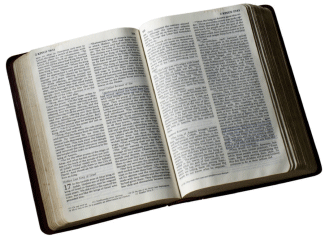How Do We Behold Him?
By Jonathan Mitchell
In 2 Corinthians 3:18 we read:
“Now we, ourselves, all – having a face that has been uncovered and remains unveiled [note: as with Moses, before the Lord, Ex. 34:34] – being folks who by a mirror are continuously observing, as ourselves, the Lord's [= Yahweh's or Christ's] glory (or: being those who progressively reflect – from ourselves as by a mirror – the glory of [our] Owner), are presently being continuously and progressively transformed into the very same image, from glory into glory – in accord with and exactly as – from [the] Lord's Breath-effect (or: from [the] Spirit of [the] Lord [= Christ or Yahweh]). [comment: considering the context of this chapter, this may refer to the transformation from glory of Moses, into the glory of Christ; or, it may be speaking of a from time to time transfiguration from the glory of humanity into the glory of the Anointing, on an individual basis]”
 Assuming a view that "the Lord," here, is Christ, what are we seeing as we behold Him? Our focus should be on Christ, that in seeing Him we will also see the Father (Yahweh). But what do we see? Paul, in 1 Cor. 1:23, said that, "we preach Christ crucified (being one having been put to death on a cross)." This was the picture of Christ that Paul and his associates were presenting to both Jews and the nations (Gentiles) as the essence of the good news. I submit that this was a picture of both the greatest evil done by mankind (slaying the Son of God), and the greatest good to mankind (their salvation and deliverance, et al).
Assuming a view that "the Lord," here, is Christ, what are we seeing as we behold Him? Our focus should be on Christ, that in seeing Him we will also see the Father (Yahweh). But what do we see? Paul, in 1 Cor. 1:23, said that, "we preach Christ crucified (being one having been put to death on a cross)." This was the picture of Christ that Paul and his associates were presenting to both Jews and the nations (Gentiles) as the essence of the good news. I submit that this was a picture of both the greatest evil done by mankind (slaying the Son of God), and the greatest good to mankind (their salvation and deliverance, et al).
In vision, and its characteristic symbolism, John saw Christ as "a little Lamb standing, as one having been slaughtered." Rev. 5:6. This is the symbolic way of saying, "Christ crucified." Yet here, His glory is also on display. But the nail prints in His hands and the wound in His side still proclaim what theologians call, "the Christ event," — His death and resurrection.
In both Paul, and John, the memory of the evil act (or, as Peter said in Acts 2:23, "by wicked hands have crucified and slain") remains central to the gospel. Are we beholding Him that way?
I here quote C.H. Dodd, in his "Interpretation of the Fourth Gospel," (p. 434, 435; I translate his quotes in Greek): "To be born again is to enter into the life of spirit, which belongs to 'the above.' There is no way of entering that realm through initiations or raptures, as the mystics do vainly talk, for 'no one has ascended to heaven but He who descended from heaven - the Son of Man.' And He must be 'elevated' in order that men may have eternal life. Thus the process of man's salvation is a process of descending and ascending, carried through by the Son of Man on behalf of all men. The Son of Man, or eternal Man from heaven, descended from 'the above' into the temporal order, to ascend again, and so to make a way - or rather to be the way - for men to ascend to the Father. To say that the heavenly Man descended is to say in other terms, 'the Word became flesh' . . . lived in the flesh . . . suffered indignities at the hands of men ... was betrayed ... put in chains, and insulted with blows. Now the final indignity awaits Him: crucifixion. It is the lowest step in the 'descending' of the Son of Man. But for this final step the evangelist's word is 'lifted up/elevated.' There lies the paradox: the bottom of the descent is - 'exaltation' [the other meaning of the Greek word 'lifted up/elevated']." End of quotation.
The lowest step (the evil), the crucifixion, was the way to exaltation. So this is one way Scripture teaches us to behold Him.
 There is another way of beholding Him, and this comes from the context of my text, quoted above. In 2 Cor. 3:7, Paul begins speaking about "glory." The Law had a glory, and the encounter of Moses with Yahweh on the mount left a glory on his face. Paul uses this picture, of Moses having to veil his face at that time, as a figure for the veil which yet remained un-lifted (not being uncovered) at the READING of the OLD COVENANT (vs. 14). Further, we are told in this verse that the veil was upon their mental powers (perceptual abilities) - vs. 15 says that it lies upon their hearts. Yet, when there is a turning toward the Lord, the veil is taken from about [the heart] (vs. 16). So, when the veil is removed from the reading of the Old Covenant, what is seen? Christ:
There is another way of beholding Him, and this comes from the context of my text, quoted above. In 2 Cor. 3:7, Paul begins speaking about "glory." The Law had a glory, and the encounter of Moses with Yahweh on the mount left a glory on his face. Paul uses this picture, of Moses having to veil his face at that time, as a figure for the veil which yet remained un-lifted (not being uncovered) at the READING of the OLD COVENANT (vs. 14). Further, we are told in this verse that the veil was upon their mental powers (perceptual abilities) - vs. 15 says that it lies upon their hearts. Yet, when there is a turning toward the Lord, the veil is taken from about [the heart] (vs. 16). So, when the veil is removed from the reading of the Old Covenant, what is seen? Christ:
"And having started from Moses [Gen. - Deut.] and from ALL the prophets, [Jesus] interpreted to (for) them, within ALL the Scriptures [the OT], the things concerning Himself." Lu. 24:27
By His Spirit, with unveiled minds and heart, we too can see the glory of Christ within all the OT. We can behold Him there. Further, we can behold Him with His body, our brothers and sisters in Christ, and within His creation (Rom. 1:20), and we can behold Him within our spirit, for the pure in heart shall see God, and he that is joined to the Lord is one spirit.

Return To Jonathan Mitchell's Page